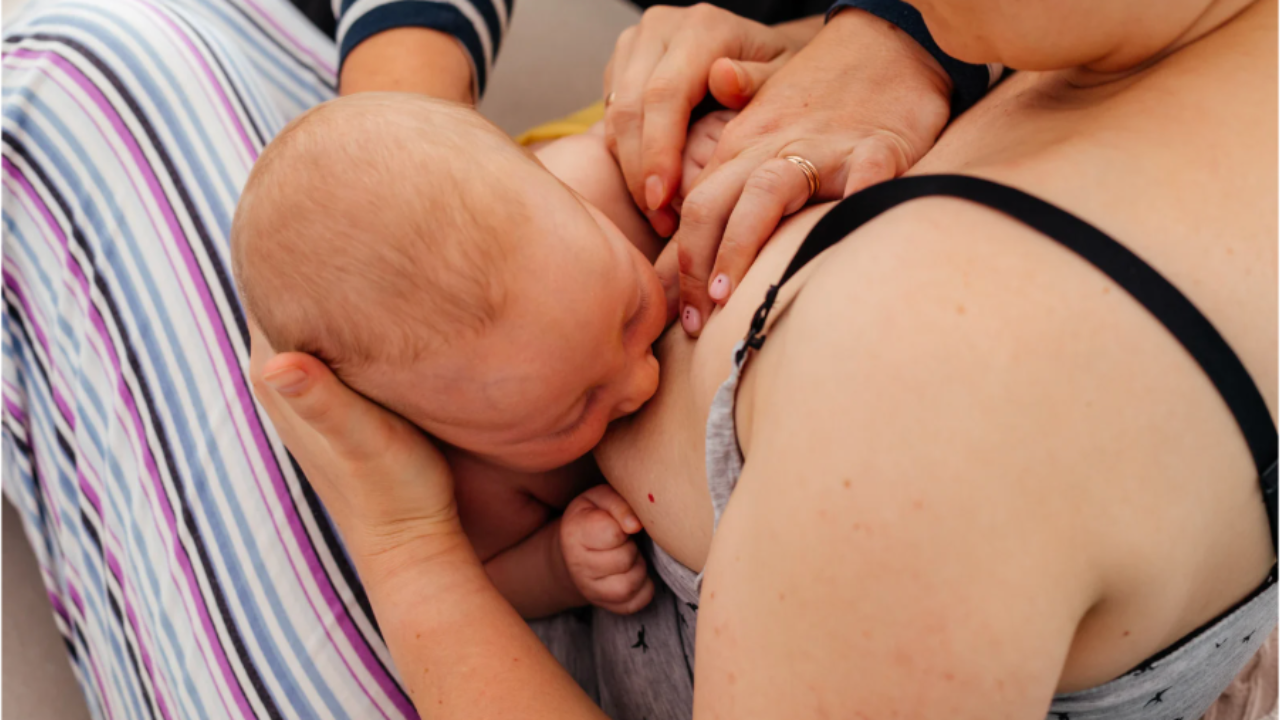When to Start Solids: From A Speech Therapist's Viewpoint
This blog post was written by the Infant Insights SLP.

It’s time to tackle a big question: When should you start solids? It’s an exciting milestone, but it doesn’t have to be overwhelming. As a speech therapist (yes, we know a surprising amount about feeding!), I’m here to guide you on when to start solids, how to approach it, and why it’s such a critical step for your baby’s development. Let’s dig in!
The Right Age to Start Solids
The recommended time to start solids is around 6 months old. At this age, your baby’s digestive system is ready, and they’re typically hitting key milestones like sitting up with support and showing interest in your food.
Every baby is different, but look for these signs of readiness:
- Sitting up with good head control
- Showing curiosity about what you’re eating
Starting too early can lead to risks like choking or digestive issues. Starting too late might result in picky eating and missed opportunities for development. Aim for that sweet spot around 6 months!
Beyond Food: Introducing Cups
Starting solids isn’t just about food—it’s also a great time to introduce drinking skills. Around 6-8 months, your baby is ready to try straw cups and open cups. Why now? Their lips, tongue, and jaw are getting stronger, and this is a prime time to build those skills.
Yes, your baby might sputter or cough at first, but don’t panic—it’s part of the learning process. Start with a single sip:
- Place the straw at your baby’s lips.
- Model how to sip.
- Remove the straw after one sip.
When introducing open cups, try filling them with a teaspoon of water. Use a gentle finger under your baby’s chin to guide mouth closure during the first sips.
Here are some of my favorite cups:
What to avoid:
- Straw cups labeled “no spill” with a silicone flap inside the straw, as they make it hard for beginners to drink.
- Wide-mouth straw cups like flip-top toddler bottles—these are better for older babies.
- Traditional sippy cups, which prolong infant sucking patterns rather than encouraging more advanced oral motor skills.
Spills are part of the learning process, so embrace the mess!
How to Approach Solids: Baby-Led Weaning (BLW) vs. Purees
Baby-Led Weaning
Some parents prefer baby-led weaning, where babies feed themselves soft, manageable pieces of food. It encourages independence, fine motor skills, and early texture exploration.
Purees and Gradual Transition
Others start with purees, introducing thicker textures and finger foods over time. This approach helps babies practice chewing and swallowing.
You don’t have to pick one method—many parents do a mix of both!
Quick Tips for Starting Solids
- Choose soft, mashable foods like banana or avocado. If you can mash it between your fingers, it’s good to go.
- Keep food pieces smaller than your pinky finger to prevent choking.
- Teach your baby how to spit food out. It’s a natural reflex, but modeling how to stick out their tongue to let food fall speeds up learning.
- Expect gagging—it’s normal as your baby adjusts to new textures.
- Let your baby explore and get messy. Early feeding is about experiencing tastes and textures, not just getting food in their mouth.
Why Starting Solids Matters
Oral Motor Development
Chewing strengthens the jaw and enhances tongue and lip coordination, which supports clear speech later.
Sensory Exploration
Introducing a variety of foods helps your baby explore different tastes, textures, and temperatures, reducing the risk of picky eating.
Social Skills
Mealtimes are an opportunity to bond. Your baby will mimic your actions, learning social cues and communication skills.
Starting solids is a personal journey, and every baby goes at their own pace. Whether you opt for baby-led weaning, spoon-fed purees, or a mix of both, the goal is to create a positive, stress-free environment.
If you have concerns about your baby’s feeding or speech development, consider joining Bloom by Infant Insights to access information on feeding, development, and more.
So, grab the high chair, prepare for some mess (okay, a lot of mess), and enjoy this exciting stage in your baby’s growth. Happy feeding—you’ve got this!









